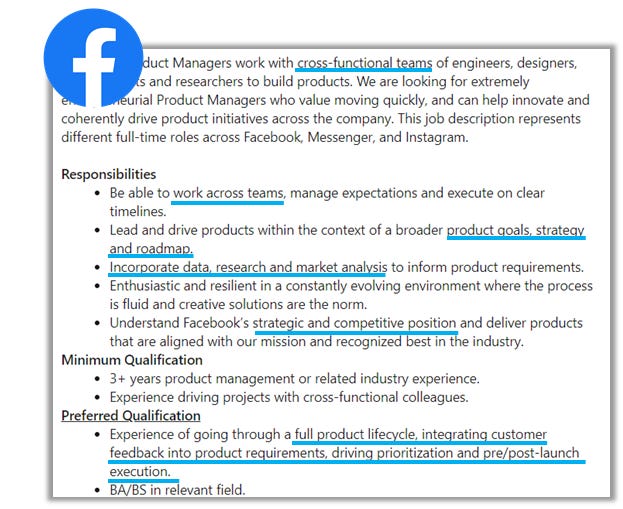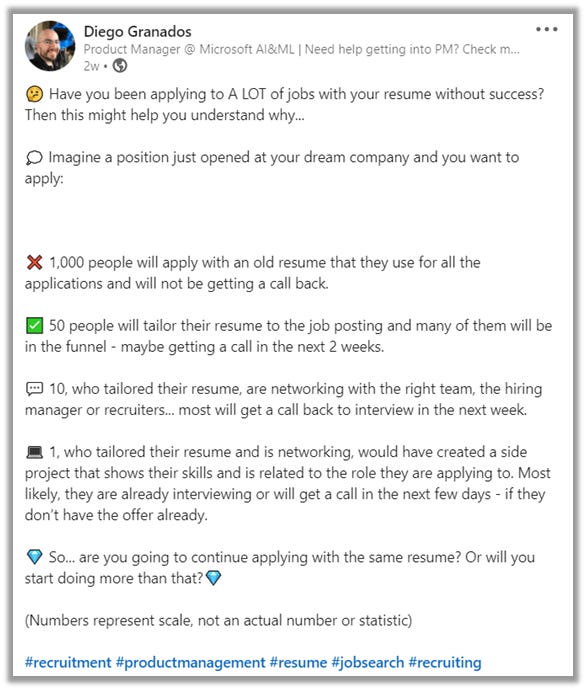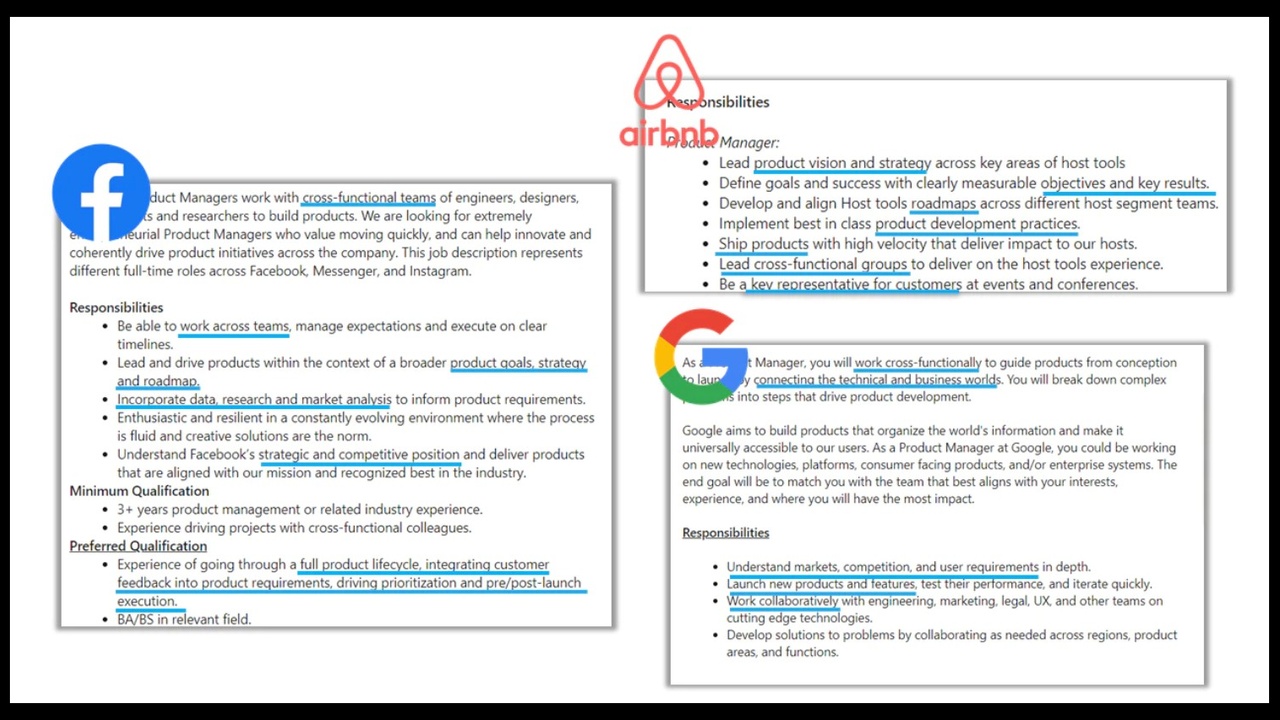
How to become a Product Manager (Complete Guide!)
Jul 24, 2022Bottom Line Up-Front: Treating your career as a product and becoming the PM of your career can help you break into Product Management. The goal of this exercise is to have a step-by-step plan to help you achieve your goal.
Start with understanding the role of a PM, making a list of companies you want to apply to, networking, preparing yourself for interviews, and applying to the job! You’ll find detailed information on each step below.
Before we begin…
Breaking into Product Management is a process and a journey. It takes time and effort to become a PM, but the great news is that you won’t be alone! I’m here to help you along the way 😉. Through my resources, I’m sure you’ll be able to land a job in Tech and Product Management! Here are a few of the hundred of messages I’ve received about my resources:
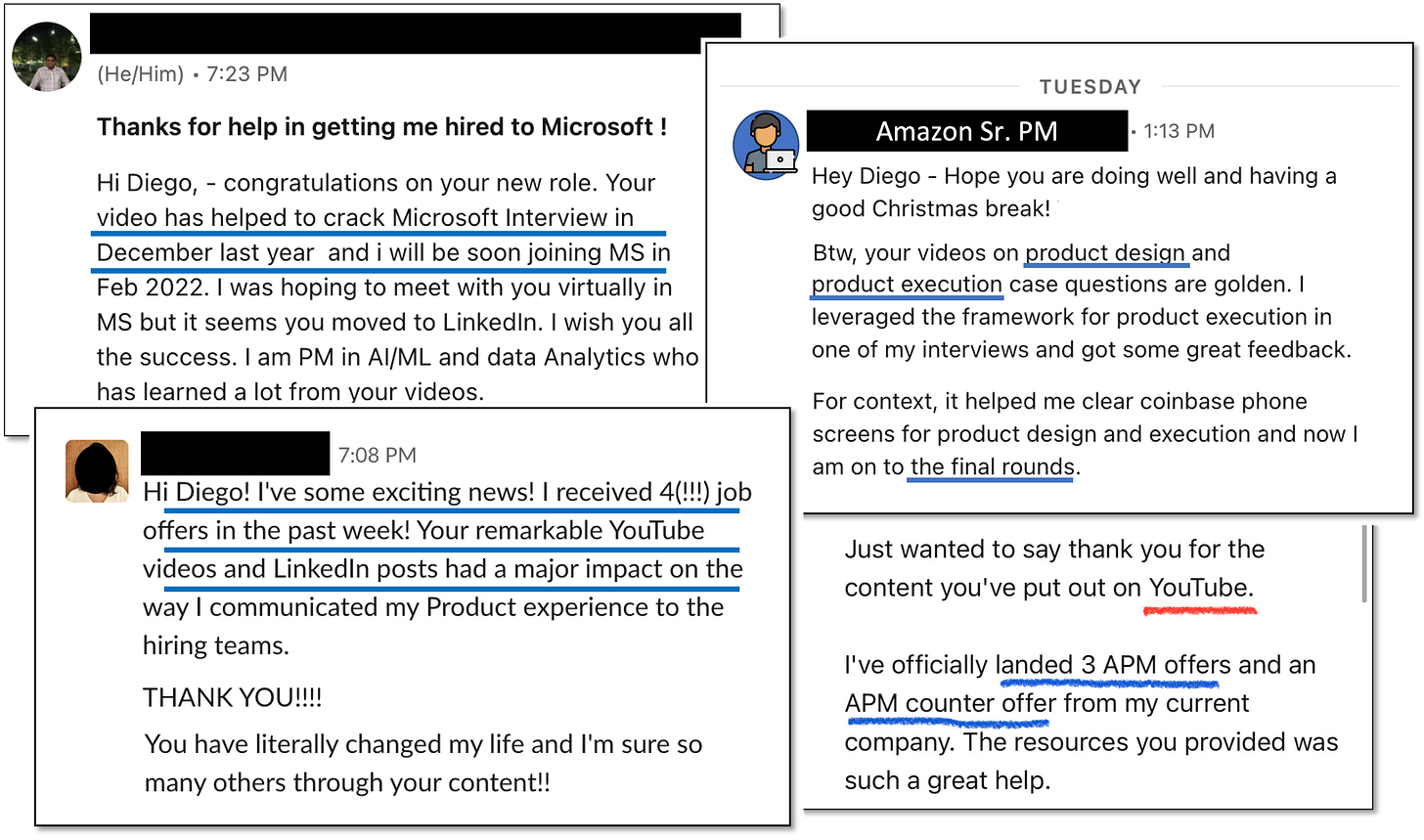
One of the biggest mistakes I see aspiring Product Managers do is that when they decide it’s time to break into PM, they go all-in on all fronts:
-
Start applying to every job posting…
-
Read all the books… or part of them…
-
More or less prepare for their interviews, memorize 5 frameworks…
-
Try to watch 1,000+ hours of videos in a matter of minutes…
-
AND in the meantime also try to network and understand what do PMs actually do…
Does this sound familiar? most likely this is how you feel…
To break into Product Management, you have to think like a Product Manager.
Why not start by being the Product Manager of your career?
🎯 Set a vision and a strategy for yourself
Once Product Managers have validated an idea by talking with customers, or in your case: decided that you want to break into PM, it’s time to set a vision for your product and a strategy to execute it.
Your vision has to be a bold statement or purpose for creating this product. In this case, a good reason WHY you want to break into Product Management.
If someone asked you today: Why do you want to be a Product Manager?
Do you have a good answer ready? This, by the way, will be an interview question.
If you want to know how to create a good answer for this question, check this video.
So here’s what you need to do to set your own vision and your strategy:
📚 Take time to deeply understand what is Product Management:
-
Cracking the PM interview is always a good book to start with.
-
My first video was about explaining Product Management.
📝 Make a list of companies and, if possible, job postings that you are interested in and write down WHY you are interested in them?
-
You can download here a template to track these companies. It will also help you track your networking efforts.
-
In an interview, they will ask you: WHY do you want to work here? - here’s how you can create an awesome answer to this question.
-
AngelList has a list of Product Manager roles available.
Something else to consider as you do your research is that not all entry-level roles are called Associate Product Manager. Some are called Product Managers, and others, specifically Microsoft, call them Program Managers.
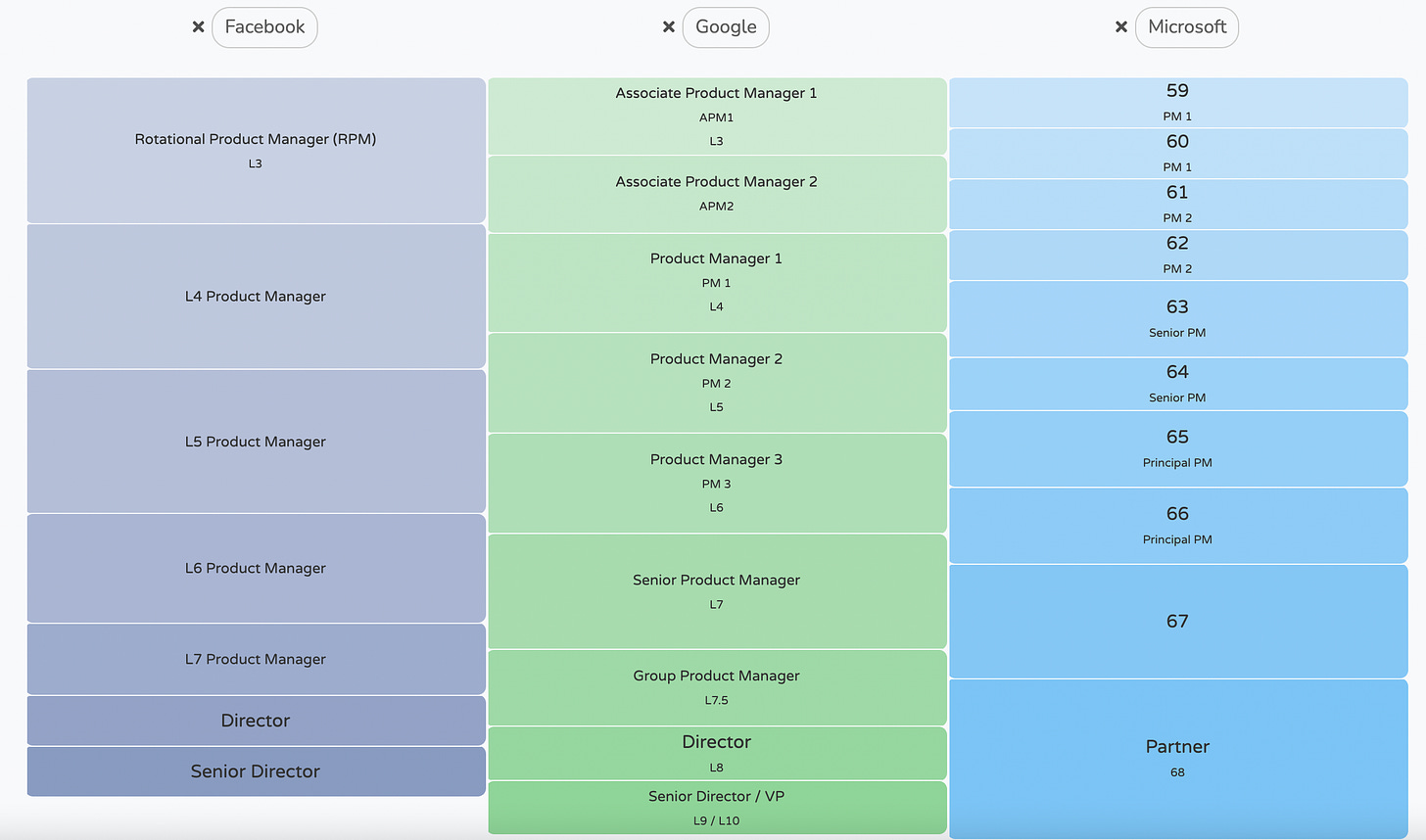
💬 Understand your customers
Now that you have set the Vision and Strategy of your product (your PM career), it’s time to understand your customers and do some market research. Your customers in this case will be the companies that you want to apply to and, as any good Product Manager, it’s your job to understand your customers and their pain points.
Your customers [companies] struggle with finding people with the right set of skills that can join them. So here’s what you can do:
🔎 From the companies and job postings you created in the previous point, make a list of common skills, keywords and themes that you detect. Here’s an example of 3 different job postings - you’ll notice there are many repeated skills they are looking for (even if they are written in a different way).
For example:
-
Facebook: “Incorporate data, research and market analysis”.
-
Google: “Understand markets, competition and user requirements”.
📝Now that you have a list of skills that companies are looking for, compare them to your own experience from school or work and track from your resume how you will show this skill. If the accomplishment you added to your resume doesn’t directly show the skill, consider changing the wording in it. Here’s a spreadsheet to help you track this.
🎬 For the skills that you don’t have a way to show them from your past experience, it’s time to make an action plan! What will you do at work, school, or side project that reflects the skills that you are missing?
A Note on Side Projects: Side projects do not have to be coded applications. In fact, you do not need to know how to code to create one! A few ideas of side projects:
-
A financial tracking system using Excel (This was a product and it was actually sold for a while).
-
Building a community for other people who are on the same path as you are: learning about Product Management, or any other topic!
-
Creating a podcast/video log/newsletter and treating it like a product: Talk to your users, gather feedback, iterate, experiment, launch!
-
Use no-code applications or IFTTT (If This Then That) to automate tasks.
Your goal is to document and show each step during the creation of your product. This process will give you stories, experience, and skills that will help you during the process of creating your resume and during your interviews.
💹 Market research
You have a vision, a strategy, and a better understanding of your customers. It’s time to do some research on the market. You have to know the ins and outs of what is currently available. Or, in other words, it’s time to network and learn the ins and outs of the companies that you are trying to apply to!
☕ In the vision section above I shared a link to a spreadsheet to track the companies you are interested in. It includes a section on networking that can help you track whom have you reached out to.
🔢 Networking is partially a numbers game. Don’t get frustrated if you don’t hear a response right away. For every 10 requests, perhaps 1 or 2 will be replied. Akshayaa Govindan, a Wish PM wrote a great article on building a network virtually.
🔎 How do you find people with whom to have coffee chats? look for Product Managers on the list of companies you have. One of my previews Newsletters I wrote about finding hiring managers, while you won’t engage with them yet, has some examples on messages and do’s and don’ts when networking that can guide you.
🎯 Your goal during these coffee chats should be to learn about the company and the role - it should NOT be about getting a job or a referral. If you had a good conversation and there’s a good connection with the other person, referrals will come naturally during these conversations.
🎤 What you get out of the conversation can also be used during your interviews. Mentioning that you talk with people at the company and that you know about the culture and the role shows that you did good research. This video can help you craft a list of questions for these coffee chats and your interviews.
Here is an example of a really bad message to send when networking:
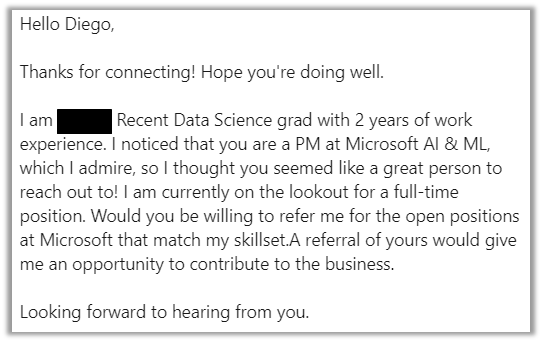
And now, here’s a message that I sent that got me multiple responses. I asked for advice to transition from one company to the next one. I also sent messages to people who were from my same high school or who had a similar background and experiences.
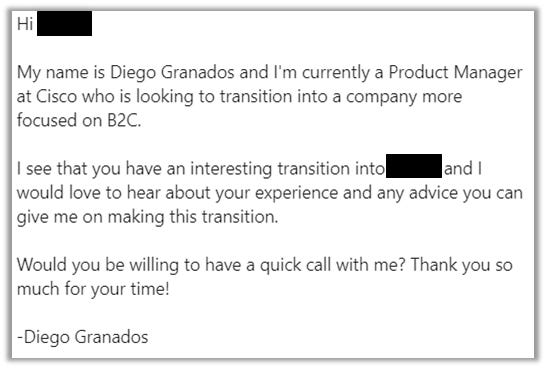
📄 Understand your value proposition
Every Product has a unique value proposition. Think about it, what value does your favorite app gives you as a user or consumer? Are there any products that you use that don’t offer any value? most likely not.
The same thing applies to you: 🤔 what is your value proposition to your customers (companies)? While your favorite app may show this value as you use it, you will show your value proposition through your resume.
With all the information you have so far from the steps above, you should be able to know what to add to your resume. One of the most important factors is to tailor your resume to the job posting. Let’s bring back one of the examples shown above:
If you were applying to this position at Facebook, you need to make sure that in your resume you include accomplishments (and don’t forget the impact!) that talk about:
-
Working cross-functionally
-
Setting Product goals and strategy
-
Creating roadmaps (remember, you don’t need to be a PM to work with roadmaps)
-
Using data and doing a market analysis
-
Incorporating customer feedback into a product (or a project you are working on)
-
Prioritizing and execution
What if you don’t have many of these skills? Here are a few options:
-
As I mentioned above, create your own side projects to build those skills.
-
Volunteer at local non-profits as a Product Manager. Build a product for them!
-
Volunteer at local startups (or get a job at one!). Find them on LinkedIn and network with them.
-
If there are PMs at your company, network with them and offer to help them. Little by little you’ll gain those missing skills (and possibly even become a PM on their team!)
Side note: You will probably get asked about these skills in the form of behavioral questions (or S.T.A.R. stories)
Everything you need to know about creating a good resume for Product Management can be found here.
🗺 Roadmap and backlog
Now that you know what the market looks like, it’s time to create your roadmap and your backlog!
A roadmap and a backlog, to oversimplify things, will contain the list of things you want to accomplish and a rough timeline for them. What this means for your product is that you need to understand what you need to do to prepare for your future interviews, and how long it’s going to take you.
This can help you visualize how much time you should spend preparing for each step of the process - Make sure to mark it on your calendar:
-
💻 Only few companies ask technical questions (e.g. Google), so you can practice them together with your Strategy Questions.
-
🎬 Here’s how I prepare for my Product Management interviews that landed me jobs at Microsoft and LinkedIn.
-
📽 You can find EVERYTHING you need to crush your PM interviews on this playlist.
🗣 Do a prototype and gather feedback
Products are not created and hidden from customers until they are released. They go through extensive prototyping and feedback collection. If products do this, why wouldn’t you do the same? Also, you don’t want to get into an interview at your dream company with your prototype incomplete, do you?
Prototyping for you means that you should do as many mock interviews as you possibly can. Practice. Practice. Practice is the secret sauce to a great interview.
Doing many mock interviews will help you with:
💪 Gain confidence at the time of your real interview.
📝 Be faster at brainstorming solutions during an interview.
And I get it… the first few mock interviews you’ll do will be awkward and you’ll realize how bad it was… pretty quickly. The great news is that you didn’t do this in your real interview!
Here’s what you can do to get ready for Mock Interviews:
-
Check this playlist on Mock Interviews if you haven’t done many or not sure how a PM Mock interview is executed.
-
Use a website like Stellar Peers to get paired for a Mock Interview with others who are practicing for interviews as well. Product Buds slack is another great resource to find people to practice with!
🚀 Time to launch your product!
Now that you know everything that you need to do to start your Product Management career, it’s time to launch your product! or, in other words, start putting everything in practice and start applying to jobs. However, applying to jobs is not simply submitting your resume to the company and waiting on the result.
This post that I made on LinkedIn will hopefully illustrate the differences in the way you apply to jobs and with all the resources I’ve shared with you, it’s time to go to market!
In short…
To navigate your career into Product Management, treat yourself as the PM for your career. Doing everything at the same time can be overwhelming, so make sure that you have a good plan and step-by-step approach to tackle this:
-
Have a good understanding of what is Product Management and why you want to become one.
-
Do a good research on companies you want to work for and understand the skills you need. Make sure you add these to your resume and your stories.
-
Understand what type of questions you need to practice and how to practice them. Once you are ready, it’s time to apply and do much more than just submit your resume.
Best of luck in your preparation and upcoming interviews!
Whenever you're ready, there are 2 ways I can help you:
Helping Everyone To Land Their Next Product Manager Job
Join 8,000+ current and aspiring Product Managers in my Newsletter. Every email gives you a quick and actionable tip on landing your next Product Manager offer.
I hate SPAM. I will never sell your information, for any reason.



